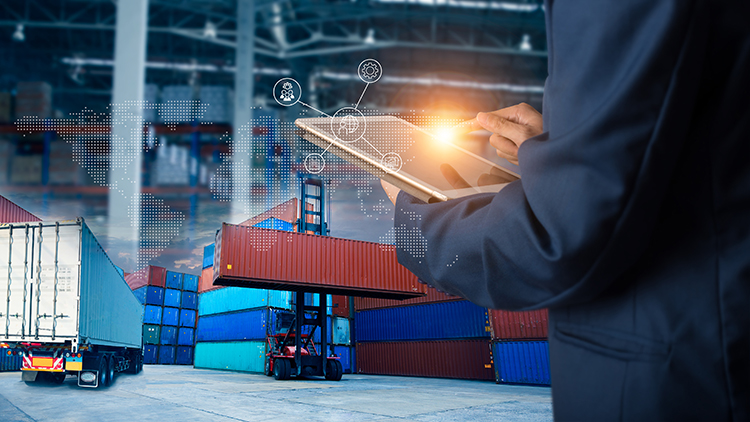
Because the labor market for farm workers has been tightening for years, farmers have had to adopt technologies in some areas and adapt their businesses in others to make the most of the labor they can get. However, you could also apply those statements to the shipping and seaport industries that are critical to move our dairy products around the country and the world.
Streamlining port operations has been under even more scrutiny with the delays and problems ports have experienced in recent months. Technology, as well as new approaches to transport, will be key in preventing those issues in the future, said Andrew Hwang on the May 18 Hoard’s Dairyman DairyLivestream.
“We have a freight intelligence transportation system that’s going live in the third quarter of this year. It really will tell all the port users at any moment what is going on in the port,” explained Hwang, who helps oversee the Port of Oakland. “It tracks all trucks that come in, you can tell what the queues are outside the gate, you can see what the truck turn times are, and you can see where the traffic is. This will help port users understand better what is going on the day that you’re trying to get containers into the terminal.”
For a variety of reasons, including imminent labor negotiations by seaport workers, other methods of improving operations are also necessary. “We’re always looking at different ways to increase the throughput. There’s not much land on the West Coast for additional terminals, and so the only way you can increase the volume is to increase the throughput,” Hwang described.
In addition to working with trade organizations to identify bottlenecks, Hwang said cargo shippers should be reevaluating how their product is moved. Although port problems have been minor for years, the pandemic accelerated them, and he doesn’t see operations going back to the way they were before COVID-19.
In particular, the Port of Oakland’s manager of business development and international marketing said it will likely continue to be difficult to get containers to the Midwest to be loaded with product. There’s little reason for ocean carriers to take them there.
“I’ve seen the import pricing strategies for this year, and I can tell you there’s a deliberate effort to disincentivize containers going into the interior,” Hwang asserted. “They would much prefer that they get stripped out, transloaded on the West Coast, and then can just go back to Asia.”
He advised that exporters, particularly those from the Midwest and those that require refrigerated containers, will need to consider how to move cargo without containers. That may mean using box cars to get product to the West Coast and transloading it there.
The combination of exporter adjustments and shipper advancements will hopefully improve efficiencies so U.S. products can more efficiently reach those around the world.
To watch the recording of the May 18 DairyLivestream, go to the link above. The program recording is also available as an audio-only podcast on Spotify, Google Podcasts, Apple Podcasts, and downloadable from the Hoard’s Dairyman website.
Register to continue receiving updates
The next broadcast of DairyLivestream will be on Wednesday, June 15 at 11 a.m. CT. As of January 2022, we moved to a new system. If you have not yet, you will need to re-register to continue receiving email updates and links to the webcasts. You can sign up here now. Registering once will sign you up you for all future events.








